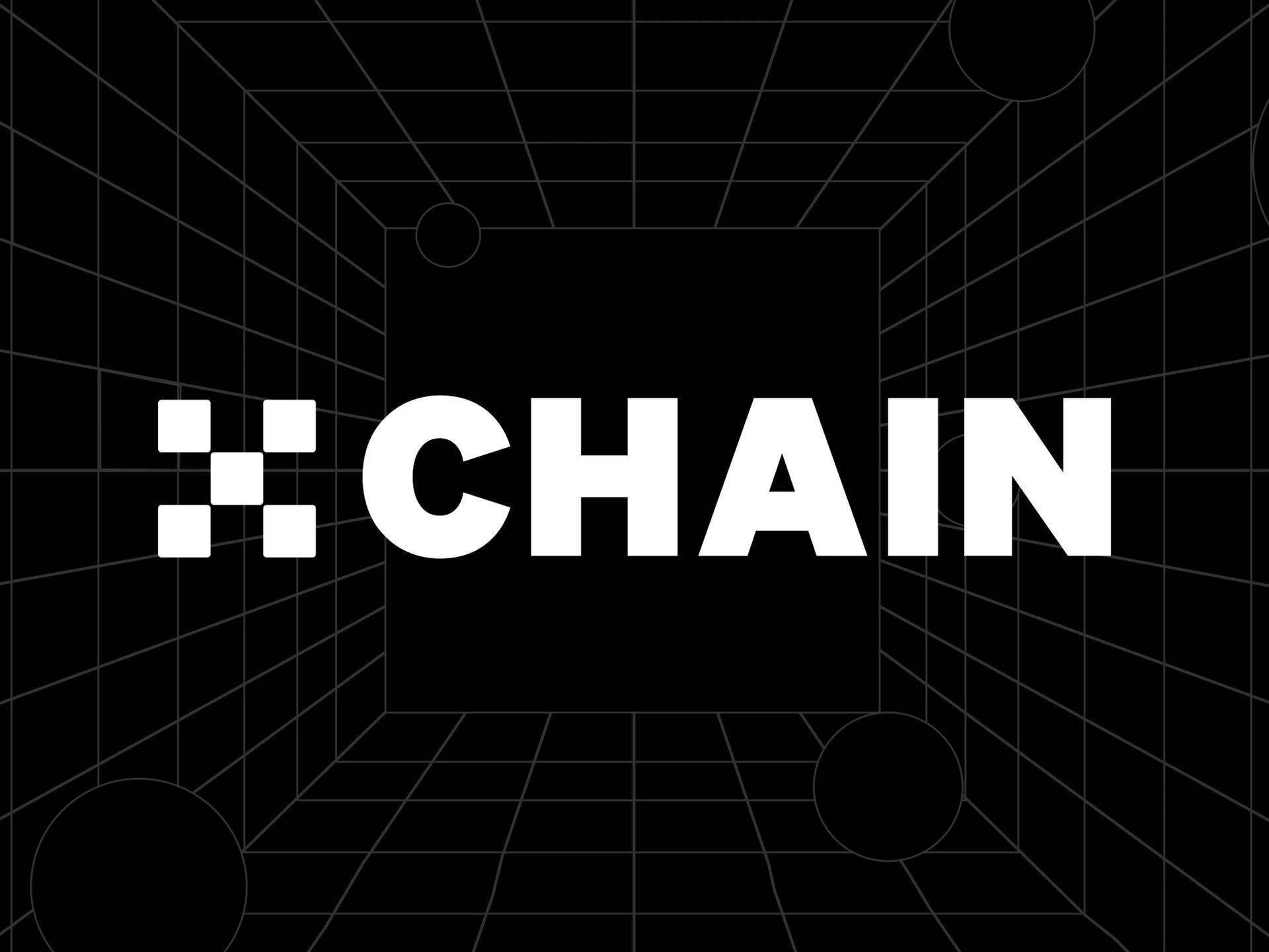위키 구독하기
Share wiki
Bookmark
OKTChain
OKTChain
OKTChain(OKT체인)은 OKX 생태계에 통합된 Cosmos 기반의 EVM 및 IBC 호환 레이어 1 블록체인 네트워크로, 상호 운용성과 성능을 강조합니다. 개발자에게 효율적인 애플리케이션 구축 및 확장 도구를 제공하여 낮은 가스 수수료와 높은 확장성을 제공하는 것을 목표로 합니다.[1][2]
개요
2020년 2월 테스트넷을 출시한 OKTChain(오케이티체인)은 기술 탐구와 개선을 우선시합니다. 샤딩과 같은 발전, 합의 최적화 및 크로스체인 자산 통합을 강조하는 OKTChain은 Cosmos(코스모스) 아키텍처를 dApp(탈중앙화 애플리케이션) 체인 개념에 채택합니다.
향상된 합의 메커니즘을 통해 초당 5000건의 트랜잭션(TPS)을 지원하는 높은 확장성과 성능을 달성하는 것을 목표로 합니다. Inter-Blockchain Communication(IBC)(블록체인 간 통신)을 통해 OKTChain은 Cosmos(코스모스) 생태계 내에서 신속한 가치 전달을 가능하게 하고자 합니다.
Ethereum Virtual Machine (EVM)(이더리움 가상 머신)과 완벽하게 호환되므로 오픈소스 접근 방식을 통해 개발자 친화적인 환경을 제공하며 Chainlink(체인링크)와 같은 오라클 프로토콜과 통합됩니다. 보안에 중점을 두고 OKTChain은 안정적인 스마트 계약 감사를 제공하며 블록체인 네트워크의 중앙 집중화 위험을 완화하는 것을 목표로 합니다.[3][4][5]
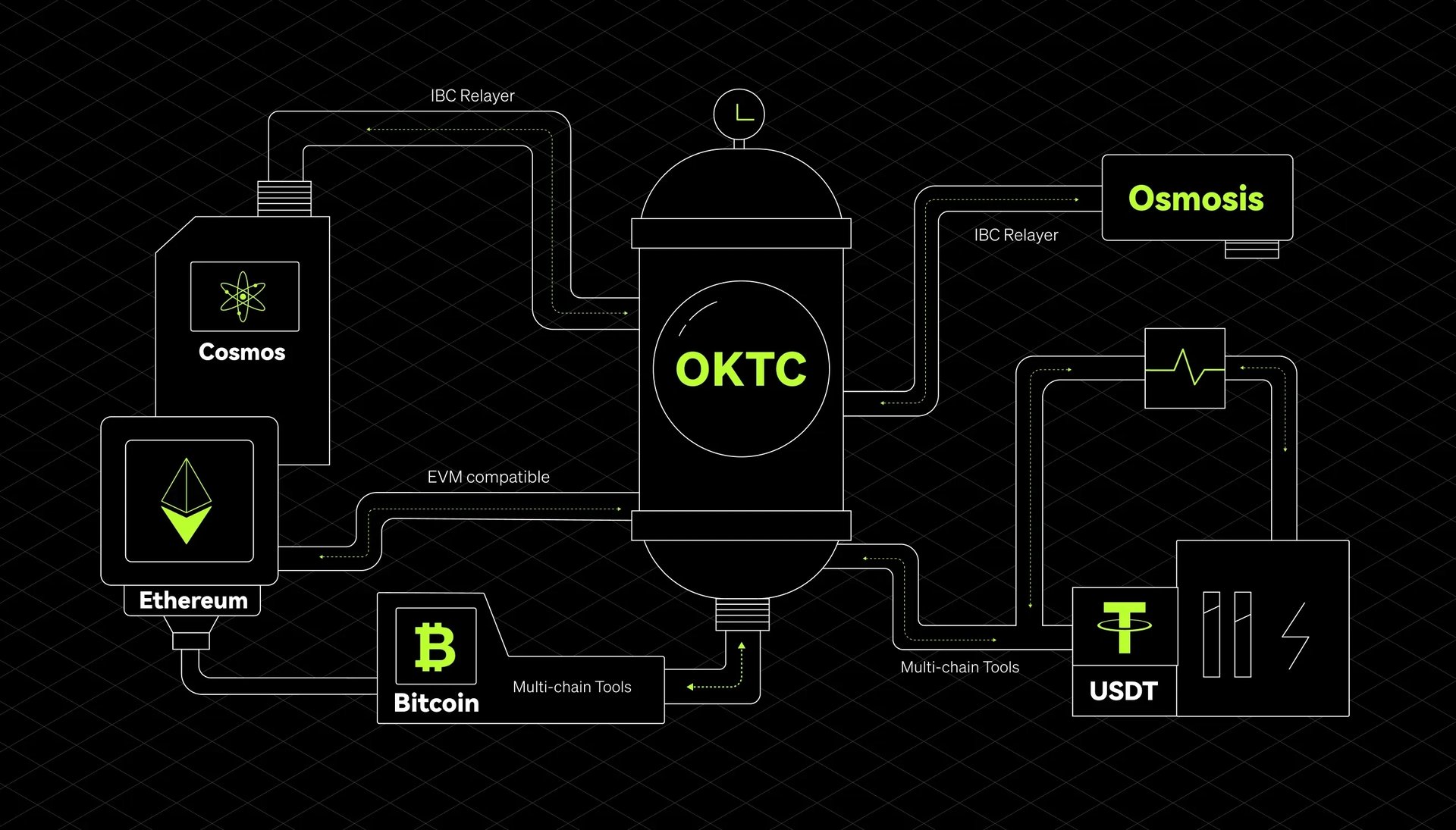
블록체인 미들웨어
OKTChain은 비용 절감을 목표로 애플리케이션 개발을 간소화하기 위해 "블록체인 미들웨어" 개념을 도입합니다. 다양한 산업 분야의 미들웨어와 유사하게, 기술 아키텍처 간의 자원 공유를 용이하게 합니다. 토큰 보유자는 토큰을 위임하여 보상을 받고 제안에 투표함으로써 OKTChain의 보안 및 거버넌스에 참여할 수 있습니다.[6]
OKTC 익스플로러
OKTC 익스플로러는 사용자에게 블록, 트랜잭션, 검증자 및 기타 필수 정보와 같은 OKTC 데이터를 검색, 조회 및 분석할 수 있는 기능을 제공합니다. OKlink 및 exchaincli를 통해 사용자는 계정, 전송, 위임 및 거버넌스와 같은 기능에 액세스하여 OKT 체인과 상호 작용할 수 있습니다. Exchaincli는 OKT 체인 기능에 대한 포괄적인 지원으로 특히 주목할 만합니다.[10]

역사
2020
2020년, OKTC 팀은 샤딩, 합의 최적화 및 크로스체인 자산 통합과 같은 측면을 개선하는 작업을 수행했습니다. Cosmos 아키텍처의 dApp-체인 개념을 채택하여 초기 OKTC 버전을 개발했습니다.
OKTC 테스트넷은 2020년 2월에 출시되었습니다.[4]
2021
2021년 5월, OKTChain은 이더리움 가상 머신 (Ethereum Virtual Machine, EVM) 지원의 필요성을 해결하기 위해 EVM 호환성을 도입했습니다. 블록체인 생태계 내에서 말이죠. 2021년 11월까지 OKTChain은 확장성 향상을 목표로, 2022년까지 초당 5,000건의 트랜잭션 처리량 증가를 목표로 했습니다.
또한, OKTChain은 암호화폐, DeFi, 그리고 GameFi 동향에 대한 업계 전문가들의 통찰력을 제공하고자 0xTalks 팟캐스트 시리즈를 시작했습니다.[4][25]
2022
2022년, OKTChain은 생태계 성장과 성능 최적화 과정에서 어려움을 겪었습니다. 사용자와 개발자 경험 향상에 중점을 두어 상호 운용성 발전을 이루었습니다. Tether (USDT) 및 Unstoppable Domains와 같은 기관과 파트너십을 맺어 전 세계 커뮤니티를 73,000명 이상으로 확장했습니다.
또한 IBC 프로토콜 통합을 포함한 중요한 업그레이드를 통해 OKTChain과 다른 블록체인 네트워크 간의 효율적인 자산 이전을 가능하게 했습니다. Gas Back 프로그램 및 유동적 스테이킹 도입과 같은 이니셔티브는 dApp 생태계 내 성장을 촉진하고 DeFi 프로토콜 내에서 OKT의 유틸리티를 강화하기 위해 고안되었습니다.[22]
2023
In 2023, OKX launched OKB Chain (OKBC) as an Ethereum Layer 2 network, initially utilizing sidechain technology and later transitioning to a Layer 2 scaling solution based on ZK technology. Simultaneously, the OKX team concentrated on advancing the OKT Chain ecosystem, previously known as OKC/OKX Chain, by supporting Wasm and exploring innovative consensus models.
Amidst the surge in DeFi activities, the focus shifted towards technical improvements and addressing community requirements, resulting in adjustments such as reducing block rewards to 21 million OKT by 2028 and emphasizing decentralized governance. Moving forward, OKTC aims to enhance OKT's practical applications, foster decentralized governance, implement cross-chain initiatives, explore emerging technologies, and engage the community through the OKTC Community Program.[23][24][4]
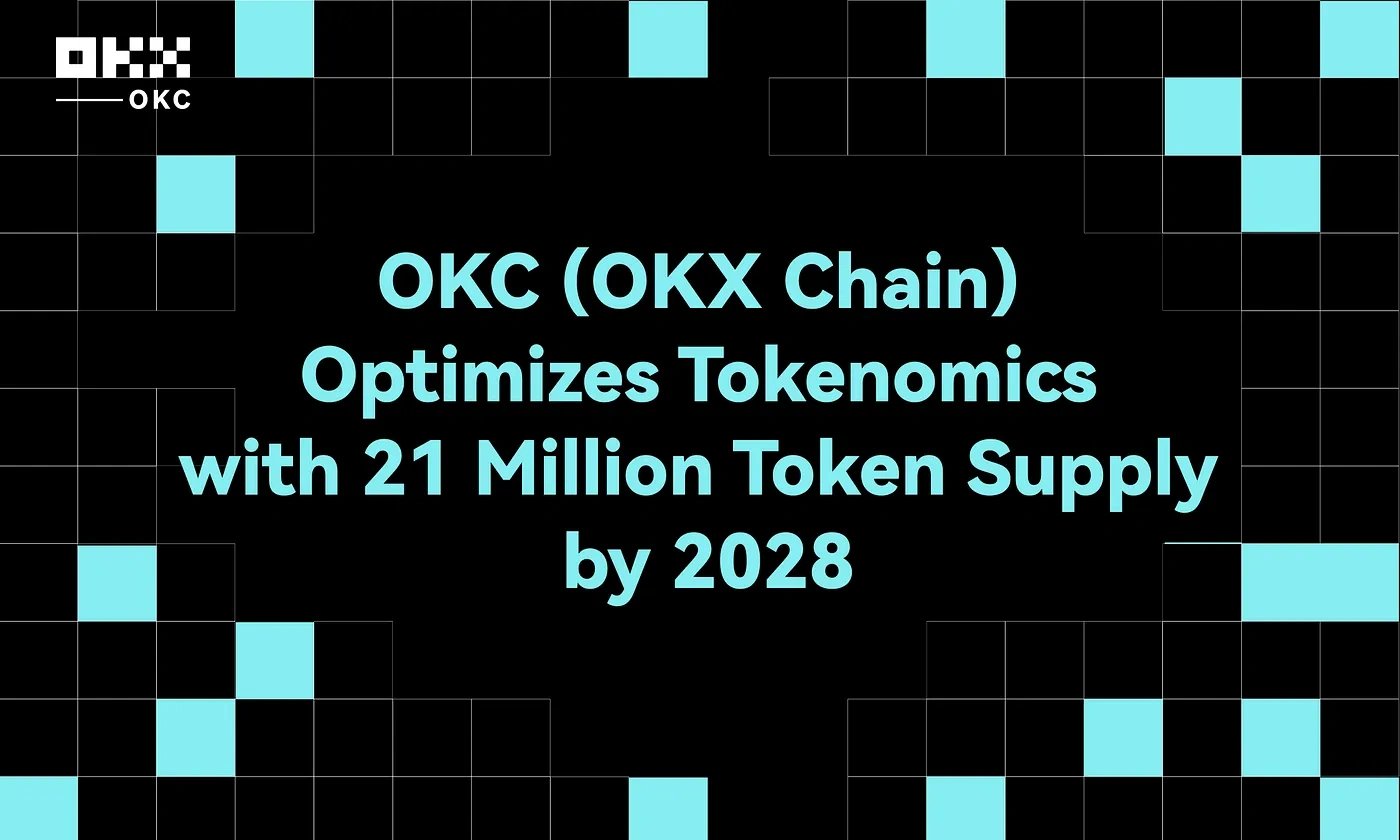
OKTC 노드
- 풀 노드: 텐더민트의 풀 노드는 블록체인 원장의 상태를 유지하고, 트랜잭션을 검증하며, 스마트 계약을 실행합니다. 네트워크 보안에 기여하고 OKTC 생태계 애플리케이션의 데이터 소스 역할을 합니다.
- 검증자: 텐더민트의 검증자는 지분 증명 합의에 참여하여 블록을 제안하고 투표합니다. 검증자는 담보로 암호화폐를 스테이킹하여 네트워크 보안을 확보하고, 네트워크 무결성 유지를 위해 보상을 받습니다.[11]
OKTC 사용자
일반 사용자는 호환 가능한 소프트웨어를 사용하여 트랜잭션을 처리하여 네트워크의 건강과 유동성에 기여합니다. 개발자는 생태계 성장을 유지하기 위해 사용자 친화적인 애플리케이션을 우선시합니다. 위임자는 검증자에게 암호화폐를 스테이킹하고, 검증자는 전체 노드를 실행하고 합의에 참여하여 네트워크 보안을 유지합니다.
Tendermint의 제안자는 각 블록 이전에 다음 리더 노드를 중재하고 선택하여 순환을 통해 블록체인의 효율성과 보안을 보장합니다. 후보 제안자는 스테이크 및 과거 성과와 같은 요소를 기반으로 선택되어 분산된 블록 생성 및 네트워크 보안을 촉진합니다.
제안자는 올바른 소프트웨어 버전을 유지하고, 개인 키를 안전하게 보호하며, 제안에 투표하고, 커뮤니티와 소통하고, 생태계 변화에 적응함으로써 적극적으로 거버넌스에 참여합니다.[12][13]
합의 아키텍처
OKTC는 모듈성 및 합성성을 위해 Cosmos SDK를 활용하고, Tendermint Core는 비잔틴 장애 허용(BFT) 상태 머신 복제(SMR)를 보장합니다. 이러한 설정을 통해 개발자는 프로그래밍 언어를 자유롭게 선택할 수 있습니다. 검증자는 블록을 제안하고 커밋하며, 위임자는 평판과 지분을 기반으로 검증자를 결정합니다. Tendermint의 순환 메커니즘은 제안자 선택의 공정성을 높입니다.
합의 과정에는 제안, 예비 투표, 예비 커밋과 같은 단계가 포함되어 검증자의 합의를 보장합니다. ABCI는 Tendermint Core와 애플리케이션 간의 통신을 용이하게 하여 개발자가 모든 언어로 블록체인 앱을 작성할 수 있도록 합니다. OKTC의 EVM 모듈은 Ethereum과의 호환성을 보장하여 친숙한 개발자 환경을 위해 EVM 상태 전환을 지원합니다.[14][15][16]
OKTC 솔루션
유동적 스테이킹
OKTChain의 유동적 스테이킹 프로토콜은 사용자가 유연성을 유지하면서 스테이킹 보상을 얻을 수 있도록 함으로써 OKT 토큰의 사용성을 개선하는 것을 목표로 합니다. 사용자는 OKT를 stOKT로 교환하여 다양한 DeFi 애플리케이션에서 활용할 수 있으며, 최소 토큰 요구 사항 및 락업 기간과 같은 기존의 장벽을 제거합니다.
stOKT 토큰은 자동으로 보상이 누적되므로 사용자는 언스테이킹하여 초기 스테이킹된 OKT와 누적된 보상을 청구할 수 있습니다. 이 프로토콜은 OKT 보유자에게 스테이킹 프로세스에서 향상된 유연성과 접근성을 제공하여 보다 역동적인 생태계에 기여하는 것을 목표로 합니다.[18]

OKTCSwap
OKTChain의 OKC Swap은 변동성이 큰 암호화폐 시장에서 슬리피지를 최소화하도록 설계된 탈중앙화 거래소(DEX)입니다. 예상 거래 가격과 실제 거래 가격의 차이인 슬리피지는 유동성과 반비례 관계를 갖습니다. OKX의 지원을 받는 OKC Swap은 안전하고 안정적인 스왑을 최소 슬리피지로 우선시합니다.
이는 OKTChain이 안정적인 플랫폼을 제공하려는 노력을 반영합니다. OKC는 확장성이나 보안을 저해하지 않고 상호 운용성을 향상시키는 것을 목표로 하며, 사용자, 개발자 및 프로젝트에 동등한 기회를 제공하는 다중 체인 네트워크를 구축하고자 합니다.[19][20]
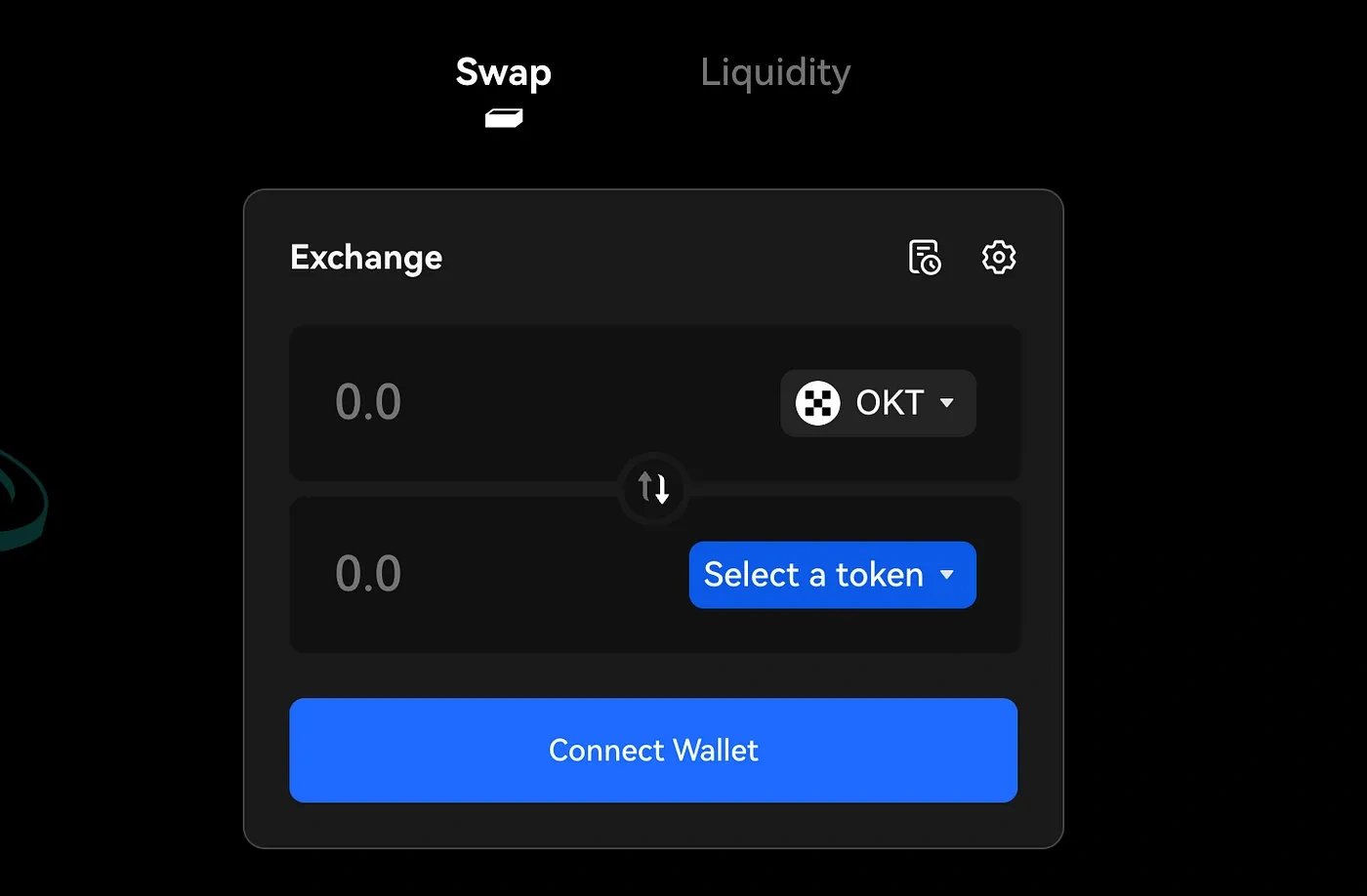
OKTCBridge
OKTChain의 OKC 브리지는 IBC(Inter-Blockchain Communication) 프로토콜을 통해 OKTChain과 다른 IBC 지원 체인 간의 효율적인 자산 전송을 위한 크로스체인 상호 운용성을 개선하는 것을 목표로 합니다. 예를 들어, 테더 (USDT)도 코스모스(Cosmos) 생태계로 OKTChain을 통해 확장되었으며, 코스모스(Cosmos) 기반 생태계에서 최초로 발행되었습니다.
개발자는 IBC Relayer와 OKTChain 슈퍼노드를 사용하여 코스모스(Cosmos)와의 크로스체인 작업을 수행할 수 있습니다. 또한, OKC 브리지 업그레이드는 사용자에게 100달러 상당의 지원 토큰을 OKTChain으로 브리징하는 경우 OKT 에어드롭을 제공하여 인센티브를 제공합니다. OKTChain은 이더리움(Ethereum), 트론(TRON), 비트코인(Bitcoin), 라이트코인(Litecoin), 비트캐시, 폴카닷(Polkadot), 파일코인(Filecoin), 리플(XRP) 등 8개 체인을 지원하며, 모든 사용자에게 가스 수수료 솔루션을 제공합니다.[20]

OKTC VRF
OKTChain의 VRF(검증 가능한 난수 함수)는 스마트 계약에 대한 공정한 난수 값을 보장합니다. 오라클 운영자 및 사용자를 포함한 어떤 개체의 조작도 방지하기 위해 암호화된 증명을 제공합니다. OKTChain VRF는 구독(자금 중앙 집중 방식) 및 직접 자금 조달(계약이 OKT로 직접 지불)의 두 가지 요청 방식을 제공하여 블록체인 게임 및 NFT를 포함한 다양한 애플리케이션을 지원합니다.[21]
OKToken
OKT 토큰은 OKTChain 생태계의 핵심 요소이며, 보유자에게 다양한 유틸리티를 제공합니다. 보유자는 검증자에게 OKT를 위임하여 네트워크 보안 및 거버넌스에 적극적으로 참여하고, 위임형 지분 증명을 통해 더 많은 토큰을 얻을 수 있습니다. 또한 OKT 보유자는 투표를 통해 네트워크 결정에 영향을 미칠 수 있습니다. 검증자는 10,000 OKT를 스테이킹해야 하며, 거버넌스 제안에는 추가 토큰이 필요합니다.
OKT 스테이킹은 투표권을 부여하며, 각 토큰은 한 표에 해당합니다. OKT는 검증자에 대한 스테이킹 보상으로도 사용되며, OKTChain의 DeFi 프로토콜뿐만 아니라 GameFi 및 NFTs와 같은 다른 Web 3.0 분야에도 참여할 수 있도록 하여 참여 및 가치 창출 기회를 제공합니다.[7][8][9]
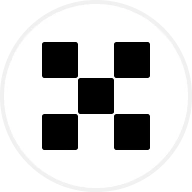
유통
OKT는 최대 2100만 토큰으로 제한되며, 초기에는 1000만 토큰이 배포되었습니다. 현재 약 1785만 토큰이 유통되고 있으며, 약 6.3%가 락업되어 있습니다. 보상 반감기 메커니즘을 통해 토큰 발행량이 점진적으로 감소하며, 2028년까지 완전 유동성을 목표로 합니다.
초기 배포는 초기 OKB 보유자에게 유리했으며, 현재 연간 발행량은 블록 검증자에게 돌아갑니다.[9]
거버넌스
OKTChain의 거버넌스는 의사결정에서 공정성과 보안을 유지하는 것을 목표로 합니다. 제안자는 악의적인 활동을 막기 위해 제안을 시작하려면 OKT를 스테이킹해야 합니다. 특정 상황을 제외하고는 본딩된 OKT 보유자가 투표에 참여합니다. 투표 가중치는 본딩된 OKT의 수량에 따라 결정됩니다.
중복 투표를 방지하기 위해 투표 기간은 언본딩 기간보다 짧게 설계되며, 일반적으로 최소 72시간으로 설정됩니다. OKTChain은 텍스트, 매개변수, 소프트웨어 업그레이드, 상장폐지의 네 가지 제안 유형을 지원합니다. 제안은 텍스트 제안을 제외하고 실행 단계를 생략하는 시작, 예치, 투표, 실행 단계를 거칩니다.[17]
잘못된 내용이 있나요?
